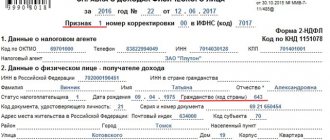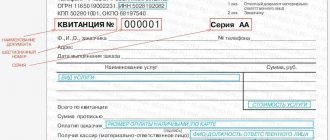What the law says
In April 2015, Federal Law No. 82-FZ came into force. He relieved JSCs and LLCs of the obligation to have a round physical seal. It sounds like this:
“...The company has the right to have a seal, stamps and forms with its name, its own emblem, as well as a trademark registered in the prescribed manner and other means of individualization. Federal law may provide for the obligation of a company to use a seal. Information about the presence of a seal must be contained in the company’s charter...”
Let's go through the key points and decipher what this means:
- Management independently decides whether the organization needs a seal or not.
- The decision on the presence of a seal is prescribed in the charter. Further wording when drawing up documents depends on this.
- Print is an element of the “individual style” of an organization. That is, it has the same function as a sign or logo. It turns out that there are no requirements for the form and content of the print.
- At the same time, certain laws provide for cases when an organization is obliged to use a seal. For example, a stamp is still needed on tax returns and powers of attorney
Important:
If we are talking about an individual entrepreneur, then it is not necessary to have a seal. Entrepreneurs make this decision at their own discretion.
Which accounting documents should be stamped?
If a company has decided to leave a seal in the company and continue to use it, it must know in which documents its presence is mandatory, and in which cases even they may not put it.
| accounting document | Availability of seal |
| Declarations for tax and accounting reporting | Not provided |
| Other documents submitted to the tax office | Not provided |
| Reports and other documents submitted to the Social Insurance Fund | A seal is provided when used by a company |
| Negative impact on the environment | A seal is provided when used by a company |
| Sales book, expense and income book | A seal is provided when used by a company |
| Documents submitted for inspection by non-tax authorities | A seal is provided when used by a company |
| Customs documents | Almost all of them have a seal |
Also, a seal may not be placed on employment contracts, orders from the manager, as well as civil contracts, unless the contract specifies that the contract itself and all amendments to it are signed and sealed.
Among other things, companies today develop the form of primary documents on their own, including determining the presence or absence of a seal on them. If, for example, the company’s seal remains, and on the forms that the organization uses in its work there is a place for it, then it is better for it to stand. If any situations arise, this will avoid unnecessary disputes.
The use of a seal is mandatory for transactions with cash and settlement documents, strict reporting forms, as well as for most personnel documents.
When can you not put a stamp?
The abolition of mandatory printing affected many laws. Now they have the wording “(if there is a seal)”
. That is, if an organization decided to work without a seal, then in some documents the presence of a stamp became optional.
Here is a summary table of such laws and documents.
| Law | Document |
| Labor Code of the Russian Federation (Article 230) | Work accident report |
| Arbitration Procedural Code of the Russian Federation (Part 5, Article 61) | Power of attorney on behalf of the organization |
| Civil Procedure Code of the Russian Federation (Part 3 of Article 53) | Power of attorney on behalf of the organization |
| Civil Code (paragraph 9, paragraph 1, article 913) | Double warehouse receipt |
| Federal Law of December 26, 2008 No. 294-FZ “On the protection of the rights of legal entities and individual entrepreneurs in the exercise of state control (supervision) and municipal control” (Part 10, Article 16) | Inspection log |
| Federal Law of 02.10.07 No. 229-FZ “On Enforcement Proceedings” (Part 2, Article 54) | Power of attorney issued on behalf of an organization to another person |
| Federal Law of July 13, 2015 No. 218-FZ “On State Registration of Real Estate” (Part 9, Article 18) | Copies of constituent documents |
| Federal Law of November 22, 1995 No. 171-FZ “On state regulation of the production and circulation of ethyl alcohol, alcoholic and alcohol-containing products and on limiting the consumption (drinking) of alcoholic products” (subclause 5, clause 1, article 10.2) | A copy of the notice of advance payment of excise duty with a mark from the tax authority at the place of registration of the buyer of alcohol |
| Federal Law of July 16, 1998 No. 102-FZ “On mortgage (real estate pledge)” (paragraph 6, paragraph 1, article 17, paragraph 2, article 25) | Securities account statements Mortgages on the fulfillment of the obligation secured by the mortgage |
| Federal Law of April 22, 1996 No. 39-FZ “On customs regulation in the Russian Federation” (clause 6, part 3, article 90) | Decisions on the issue of securities Certificates of issue-grade securities Decisions on the issue of Russian depositary receipts |
| Federal Law of December 21, 2001 No. 178-FZ “On the privatization of state and municipal property” (paragraph 4, paragraph 1, paragraph 1, paragraph 2, article 16) | Documents containing information about the share of the Russian Federation, a constituent entity of the Russian Federation or a municipal entity in the authorized capital of a legal entity Documents submitted by applicants for the purchase of property |
| Federal Law of November 27, 2010 No. 311-FZ “On customs regulation in the Russian Federation” (clause 6, part 3, article 90) | A copy of the auditor's report on the reliability of the financial statements attached to the application for inclusion in the register of authorized economic operators |
| Federal Law of 04/05/13 No. 44-FZ “On the contract system in the field of procurement of goods, works, services to meet state and municipal needs” (Article 51, Article 88) | Powers of attorney attached to applications for participation in an open tender or closed auction Application for participation in a closed auction |
When is printing required?
There are documents that are drawn up only according to strictly established forms. In them, printing is a mandatory element. Among such documents are incoming and outgoing cash orders No. KO-1 and KO-2, as well as strict reporting forms. The list of such documents is quite large, so we will look at the most common situations using examples.
| Base | Printing is required |
| Unified forms of primary accounting documentation for recording cash transactions | Receipt for cash receipt order (Form No. KO-1) Last page of the cash book (Form No. KO-4) |
| Clause 5.1 of the Directive of the Central Bank of the Russian Federation No. 3210-U on the procedure for conducting cash transactions dated March 11, 2014. | Payment documents by which the organization transfers funds |
| Clauses 3, 5 and 6 of the Regulations on the implementation of cash payments and (or) settlements using payment cards without the use of cash registers, approved by Decree of the Government of the Russian Federation of May 6, 2008 No. 359 | Strict reporting forms |
| Unified forms of primary accounting documentation for recording cash settlements with the population when carrying out trade operations using cash registers, approved by Resolution of the State Statistics Committee of Russia dated December 25, 1998 No. 132 | Journal of the cashier-operator (form No. KM-4) Journal of registration of readings of summing cash and control counters of KKM (form No. KM-25) |
| Unified forms of primary accounting documentation for recording trade operations, approved by Resolution of the State Statistics Committee of Russia dated December 25, 1998 No. 132 | Consignment note (form No. TORG-12) Commodity journal of a small retail trade employee (form No. TORG-23) |
| Unified forms of primary accounting documentation for recording trade operations when selling goods on credit and for recording trade operations in commission trade, approved by Resolution of the State Statistics Committee of Russia dated December 25, 1998 No. 132 | Certificate for purchasing goods on credit (Form No. KR-1) Order-obligation (Form No. KR-2) |
| Unified forms of primary accounting documentation for recording work in capital construction and repair and construction work, approved by Resolution of the State Statistics Committee of Russia dated November 11, 1999 No. 100, unified forms of primary accounting documentation approved by Resolution of the State Statistics Committee of Russia dated October 30, 1997 No. 71a | Certificate of acceptance of work performed (Form No. KS-2) Certificate of cost of work performed and expenses (Form No. KS-3) General log of work (Form No. KS-6) Certificate of commissioning of a temporary (non-title) structure (Form No. KS -8) Act on the suspension of construction (form No. KS-17) Act on the suspension of design and survey work for unrealized construction (form No. KS-18) |
| Unified forms of primary accounting documentation for recording the work of construction machinery and mechanisms, work in road transport, approved by Resolution of the State Statistics Committee of Russia dated November 28, 1997 No. 78 | Certificate for payments for work performed (Form No. ESM-7) Consignment note (Form No. 1-T) Waybills for all types of vehicles |
| Clause 5 of Article 185 of the Civil Code of the Russian Federation, unified forms of primary accounting documentation, approved by Resolution of the State Statistics Committee of Russia dated October 30, 1997 No. 71a | Power of attorney (forms No. M-2, M-2a) act on the recording of material assets received during the dismantling and dismantling of buildings and structures (form No. M-35) |
| Unified forms of primary accounting documentation for accounting of fixed assets, approved by Resolution of the State Statistics Committee of Russia dated January 21, 2003 No. 7 | Certificate of acceptance and transfer of fixed assets (forms No. OS-1, OS-1a, OS-16) Certificate of acceptance and delivery of repaired, reconstructed, modernized fixed assets (form No. OS-3) Certificate of acceptance and transfer of equipment for installation (Form No. OS-15) Report on identified equipment defects (Form No. OS-16) |
| Unified forms of primary accounting documentation for recording labor and its payment, approved by Resolution of the State Statistics Committee of Russia dated January 5, 2004 No. 1 | Certificate of acceptance of work performed under a fixed-term employment contract concluded for the duration of a specific job (Form No. T-73) Travel certificate (Form No. T-10) |
| Clause 29 of the rules approved by Decree of the Government of the Russian Federation of December 2, 2000 No. 914 | Corrected invoice |
| Orders of the Russian Ministry of Finance on approval of declaration forms | Tax return |
What to do in controversial moments
Seal is an optional element for a number of documents. Often it is necessary to decide the legality of the absence of a print through the courts. Let's see what the laws say.
Contracts.
The legislation does not require the presence of a seal of the parties to the agreement. For example, employment contracts can also be concluded without a seal.
Primary.
Organizations can develop forms of primary accounting documents independently. An imprint on these documents is also optional.
Employment history.
If there is a seal, then it must be affixed to the title page when filling out the work book and when changing entries. Mandatory stamping was abolished on November 27, 2016.
Reporting. Many organizations submit reports electronically. There is no need for a seal - it has been replaced by an electronic signature. However, Form 4-FSS, the sales book, and the income and expense book still require a blue imprint on their pages.
PRINTING ON DOCUMENTS
Source documents
Accounting When to stamp Accounting Policies
FSBU 27/2021
Printing on Documents and
Certification of Primary Documents
You can submit documents to the inspectorate without a stamp, the Federal Tax Service reminded.
LLCs and JSCs are not required to have a seal.
Inspections must accept documents from such organizations regardless of whether they have a seal. The tax service reminded us of this rule.
Letter from the Federal Tax Service No. KV-4-14/ [email protected]
. .
An organization may have and use several seals , both identical and different.
The possibility of printing additional information is not limited by law.
If affixing a seal on a document is mandatory, then the organization can use any seal that meets the requirements for seal details for a legal entity of a given legal form, regardless of the presence of additional information on the seal, as well as the presence of other seals.
The legislation stipulates that the organization must have a round seal containing its full corporate name in Russian and an indication of its location.
The seal may also contain the company name of the organization in any language of the peoples of the Russian Federation or a foreign language.
The legislation does not contain any requirement for registration of seals with authorities.
There are no restrictions on the number of seals that an organization can have, their purpose, or the possibility of adding additional information to the seal.
Therefore, an organization has the right to have and use several seals, including different ones
The procedure for the production and use of seals in the economic activities of organizations is not regulated by legal acts.
If the seal meets the legal requirements for the seal of the relevant legal entity (for example, for a Limited Liability Company it is round, contains the full name of the company in Russian and its location), then such a seal can be used to affix any documents and regardless of whether the organization has other seals and regardless of the presence of additional information on the seal (for example, indications “for documents”, “for invoices”, etc.).
Many organizations use multiple seals:
— one seal is used to certify financial documents,
- the second - for contracts,
— for registration of personnel documents, etc.,
Various seals are used by separate units.
Therefore, the organization has the right to develop and adopt a local regulatory act regulating the procedure for using seals. However, the law also does not establish requirements for the mandatory adoption of such a local regulatory act.
The procedure for using seals to affix shipping documents, etc. documents can also be provided for in contracts concluded with counterparties (clause 1 of article 160, clause 4 of article 421 of the Civil Code of the Russian Federation).
Source documents
. .
Stamping documents
According to the general rules, a transaction in writing must be concluded by drawing up a document expressing its contents and signed by the person or persons entering into the transaction, or persons duly authorized by them.
a general requirement for such a document to be sealed.
The main requirement is the presence of a signature on the document by an authorized person.
However, the law, legal acts and agreement of the parties may establish additional requirements that the form of the transaction must comply with, for example, sealing it, and may provide for the consequences of non-compliance with these requirements (Article 160 of the Civil Code of the Russian Federation).
Clause 5 Art. 185 of the Civil Code of the Russian Federation establishes a requirement for the sealing of a power of attorney issued on behalf of a legal entity.
If special consequences of failure to comply with the requirement for sealing are not provided, then the consequences of failure to comply with the simple written form of the transaction apply (Clause 1 of Article 162 of the Civil Code of the Russian Federation).
Thus, sealing documents confirming the completion of a transaction, the conclusion of an agreement, and its execution is mandatory only in cases provided for by legal acts or by agreement of the parties.
The absence of an imprint of the organization’s “main” seal in the contract, as well as any seal imprint, as a general rule, does not affect the validity of the contract.
Printing on Primary Documents
In relation to primary accounting documents, based on
which accounting records are kept, the law does not establish
requirements for the presence of a seal imprint.
In accordance with Art. 9 Federal Law N 402-ФЗ stamping
printing on the primary document is not mandatory.
However, many unified forms of primary accounting documents approved by Rosstat
RF, provide the requisite “place of printing”.
Rosstat Reporting
In the unified form of the consignment note (TORG-12) there is the letter designation “MP.”
However, judicial practice often proceeds from the fact that the absence of a seal in such documents does not mean that such documents do not confirm the expenses incurred, the right to tax deductions, etc.
Certification of the organization’s primary documents (transfer and acceptance certificates, delivery notes, etc.) with seals, which, in addition to the required details, contain additional information (indication “for documents”, “for invoices”, etc.) is not in itself may entail any negative consequences either in connection with the execution of the contract or for tax purposes.
If an organization has several seals, it is advisable to determine by local act the details and procedure for using each of the seals.
.
Accounting








